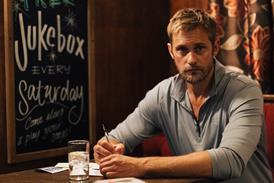Director Patricio Guzman.Chile-France-Spain-Germany. 2010. 90mins

Unknown to most foreigners, Chile’s Atacama Desert is geographically unique: It has zero humidity, so astronomers are able to pierce the translucent atmosphere to explore faraway galaxies. This arid terrain is rich in salt, so that it mummifies bodies, pre-Columbian Indians as well as victims of Pinochet’s repressive 17-year rule and the junta converted the housing of Indians nearly enslaved to work mines in the 19th century into the notorious Chucabuco concentration camp, the regime’s largest.
Overall, the material is so unusual, the research so complete for a 90-minute documentary, and the subjects so knowledgeable and sympathetic that the viewer is fascinated throughout.
With the assistance of well-chosen talking heads, mostly astronomers, archaeologists, and women searching for the remains of “disappeared” loved ones, Guzman makes a strong case for the recent past of politically based horrors obscuring the anthropological and cosmic history associated with Atacama. (He shoots impressive pre-Columbian drawings found on rock formations.)
Paradoxically, he maintains that many attempt to forget that dark page in 20th century Chilean society, though some - like Guzman himself, as evidenced in such films as The Pinochet Case and The Battle of Chile - refuse to let go. According to 70-year-old Violeta, one of a group of women who have been digging for the skeleton of close relatives for years, “We are a problem to them. We are Chile’s leprosy.”
Overall, the material is so unusual, the research so complete for a 90-minute documentary, and the subjects so knowledgeable and sympathetic that the viewer is fascinated throughout. The structure is conventional, in spite of some shots of the desert and outer space that are both beautiful and bizarre, and the pacing unhurried. Theatrical prospects are minimal; the film is bound for television, in Latin American and western European markets.
The first half of the film concentrates on the - literally - astronomic value of Atacama, even beginning with shots of a huge telescope and the top of its spherical housing opening to fill the space with desert-bright light. The director, whose voice provides the narration, speaks of a lifelong fascination with astronomy. The second part is more about the excesses of the military government, with the dedicated women on their mission and a couple of former Chucabuco prisoners offering testimony.
The two sections are, however, never distinct; Guzman and some of his interview subjects frequently find similarities between the superficially different eras. The tactic often works: What occurred high above eons ago and the disposal of the corpses of political prisoners in the 1970s and ’80s below ground are strangely poetic opposites that attest to universal truths.
Yet occasionally he stretches the analogy too much, and the final scene, in which a young astronomer interviewed early on shows Violeta and another of the understandably obsessed women the telescope from the opening, is too contrived, a forced ellipsis that is out of sorts with all the scientific data and records of exploitation, torture, and murder that Guzman provides.
Production companies: Atacama Productions, Blinker Filmproduktion &WDR, Cronomedia, Spanish Television TVE
International sales: Pyramide International, +33 1 42 96 02 20
Executive producer: Veronica Russelot
Producer: Renate Sachse
Screenplay: Patricio Guzman
Cinematography: Katell Djian
Editors: Patricio Guzman, Emmanuelle Joly, Ewa Lankiewicz
Music: Miranda & Tobar



















